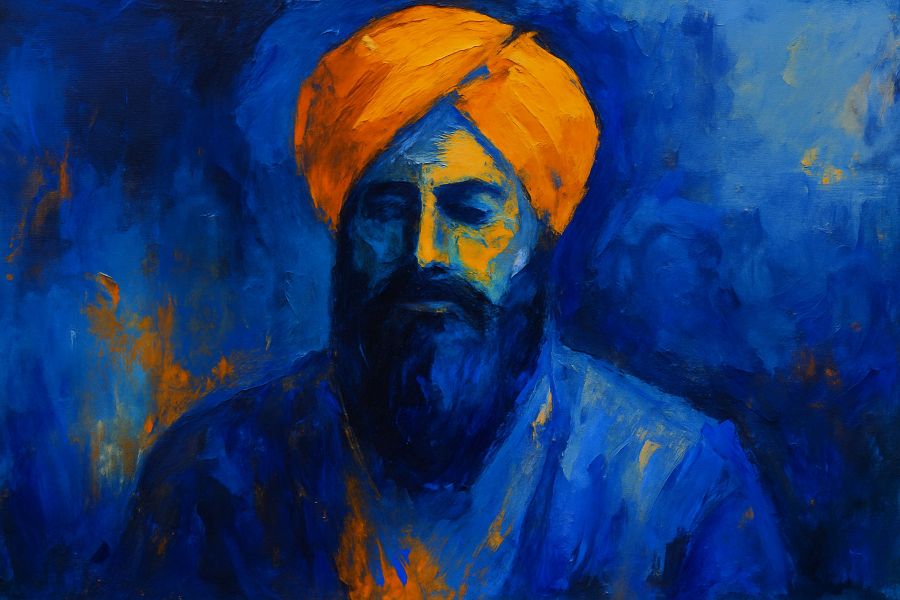In an age of growing authoritarianism, the ninth Sikh Guru’s sacrifice endures as a universal reminder that spiritual freedom cannot be crushed by imperial power.
THE MARTYORDOM of Guru Tegh Bahadur in 1675 stands as one of the most morally resonant events in the history of the Indian subcontinent. Scholars across traditions—Sikh, Indian, Western, and secular—agree that the ninth Sikh Guru’s execution was far more than a collision between an emperor and a saint. It was a profound ethical moment in which the ideal of spiritual freedom confronted the machinery of authoritarian power.
More than three centuries later, Guru Tegh Bahadur’s sacrifice continues to illuminate debates on religious liberty, human rights, and the limits of state authority. His death did not merely mark the end of one life; it marked the birth of a principle.
A Time of Hardening Imperial Orthodoxy
To understand this moment, historians situate the Guru’s martyrdom within the broader context of Emperor Aurangzeb’s rule. The Mughal Empire in the late seventeenth century was transforming. What had once been a largely plural, accommodative empire under emperors like Akbar and Jahangir had begun tightening ideological control.

Emperor Akbar
The great Mughal Emperor Akbar had earlier realised that India is a land of extraordinary diversity. Recognising that its unity could only rest on mutual respect, he proclaimed the doctrine of sulah-e-kul—equal regard for all religions and communities. This inclusiveness, he believed, was the only policy capable of keeping India together.
Renowned scholars such as Harbans Singh, Surjit Singh Gandhi, and J.S. Grewal have noted that Aurangzeb’s reign brought a new emphasis on orthodoxy, stricter regulation of public life, and attempts to impose uniformity over a highly diverse population. Policies touching on temple destruction, religious taxation, and conversion shaped a political environment in which spiritual autonomy itself became a form of dissent.
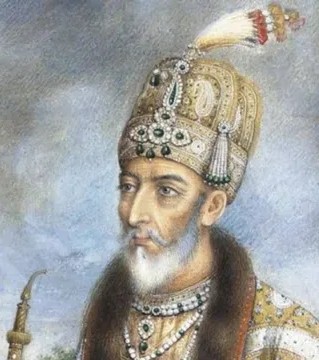
Aurangzeb
It was because of Aurangzeb’s religious bigotry—such as the re-imposition of jizya on Hindus and the execution of Guru Tegh Bahadur—that the Mughal Empire began to crumble soon after his death in 1707. Sikhs, Rajputs, Marathas, Jats, and other groups rose in revolt, rejecting his exclusionary and oppressive policies.
It was into this atmosphere that Guru Tegh Bahadur emerged—not as a political rival, but as a spiritual figure of immense moral weight whose voice carried across regions and communities.
A Stand Rooted in Universal Principle
What makes the ninth Guru’s final stand extraordinary, as historians like W.H. McLeod and Louis E. Fenech emphasise, is that it was not motivated by territorial ambition, sectarian interests, or political ascendance.
It was rooted in principle—the conviction that no ruler, religious or secular, has the authority to coerce an individual’s faith.
Guru Tegh Bahadur’s resistance was not a rebellion of arms; it was a declaration of conscience. He embodied a belief central to Sikh philosophy: that inner freedom cannot be surrendered, and that righteousness may demand the ultimate sacrifice, not for oneself, but for the dignity of all.
The Kashmiri Pandits Episode — A Traditional Narrative
Within Sikh tradition, one episode often associated with this turning point is the plight of Kashmiri Pandits facing religious pressure during Aurangzeb’s reign. Several modern historians—such as Khushwant Singh and Surjit Singh Gandhi—note that later Sikh accounts describe a group of Brahmins seeking the Guru’s support in their hour of despair.
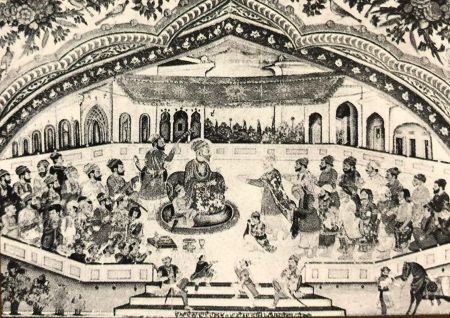
Guru Tegh Bahadur Receiving A Delegation Of Kashmiri Pandits. Mural from Gurdwara Baba Atal Rai, circa 19th century. Unfortunately no longer extant as it was whitewashed by Kar Seva babas.
While early Persian or Mughal chronicles do not record this episode, it remains a defining part of Sikh collective memory. More importantly, it reflects the broader principle that the Guru ultimately upheld: the right of every community, not only one’s own, to practice its faith without fear.
Whether or not the exact delegation is historically documented in early sources, the ethical meaning remains unchanged—Guru Tegh Bahadur’s stand transcended religious boundaries and affirmed conscience as a universal right.
The Arrest in Delhi: A Clash Between Power and Conscience
When Guru Tegh Bahadur was arrested and brought to Delhi, the confrontation between the Mughal state and Sikh conscience became starkly visible. Mughal authority demanded submission; the Guru offered none. Accounts compiled by scholars like Ganda Singh show that the choices presented were simple and brutal:
– Accept imperial religious authority
– Renounce one’s principle
– Or face death

Gurdwara Sis Ganj Sahib in Delhi
The Guru refused without hesitation. His calm steadfastness turned an imperial prosecution into a moral drama.
At Chandni Chowk, the execution that was meant to project state power instead revealed the empire’s insecurity. It showed that an emperor, commanding half a continent, still felt threatened by the spiritual courage of one unarmed man.
His death did not signal defeat. It signalled the extraordinary power of principle over coercion.
The Birth of a New Sikh Consciousness

For the Sikh community, the martyrdom of Guru Tegh Bahadur was transformative. Historians such as Louis Fenech describe it as the moment when Sikh identity took a decisive turn. The Sikh path, rooted in meditation and ethical living, was now inseparable from the moral responsibility to defend justice and protect the oppressed.
Just four years after the martyrdom, Guru Gobind Singh institutionalised this spirit through the creation of the Khalsa in 1699.
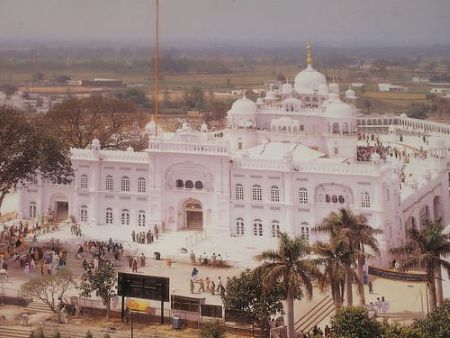
Keshgarh Sahib, Anandpur Sahib — the birthplace of the Khalsa.
The Khalsa was not born from a desire for dominance; it was born from the need to safeguard conscience in a world where power increasingly sought to regulate belief. The sword of the Khalsa was not raised for conquest, but to ensure that no tyrant could again dictate spiritual identity.
The Guru’s sacrifice thus became the ideological foundation of the Khalsa ethos—fearlessness, service, justice, and steadfastness in the face of tyranny.
Memory as a Moral Resource
Over the next century, during periods of intense Mughal repression and Afghan invasions, the memory of Guru Tegh Bahadur’s martyrdom became a wellspring of strength for the Sikh people.
It inspired the misls, fortified the community through persecution, and shaped the political culture that eventually produced the Sikh Empire under Maharaja Ranjit Singh.
Louis Fenech notes that Sikh memory is not passive recollection—it is a guide for ethical action. Remembering the Guru’s sacrifice became a way of reaffirming the community’s commitment to righteousness, humility, and protection of the vulnerable.
The Guru did not teach vengeance. He taught integrity.
He did not teach fanaticism. He taught freedom.
He did not teach fear. He taught fearlessness.
A Legacy Beyond Religion or Region
Across the academic world today, Guru Tegh Bahadur is regarded as a defender of what we now call “freedom of conscience.”
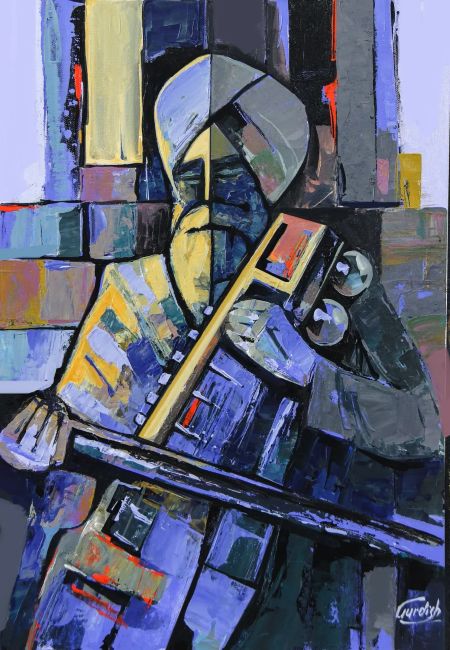
Whether scholars approach him through political, social, or religious history, the convergence is striking: his martyrdom represents one of the clearest pre-modern articulations of a fundamental human right.
His message—“fear none, frighten none”—offers a model of courage held in balance with compassion. It recognises both the need to resist injustice and the responsibility to avoid becoming unjust oneself.
Guru Tegh Bahadur’s martyrdom transcends Sikh tradition. It belongs to the moral heritage of humanity.
The Timeless Message
More than three centuries after his death, the ninth Guru continues to speak with clarity and relevance:
Conscience is worth protecting.
Freedom must be defended even when the threat does not target us personally.
True courage is moral, not martial.
The defence of the vulnerable is a sacred duty.
Guru Tegh Bahadur did not leave behind territory, armies, or thrones.
He left behind an idea—that the right to believe freely is worth dying for.
Empires crumble.
Principles endure.
And in the long view of history, the martyr of 1675 stands taller than the emperor who ordered his death. ![]()
__________
Also Read:
Disclaimer : PunjabTodayNews.com and other platforms of the Punjab Today group strive to include views and opinions from across the entire spectrum, but by no means do we agree with everything we publish. Our efforts and editorial choices consistently underscore our authors’ right to the freedom of speech. However, it should be clear to all readers that individual authors are responsible for the information, ideas or opinions in their articles, and very often, these do not reflect the views of PunjabTodayNews.com or other platforms of the group. Punjab Today does not assume any responsibility or liability for the views of authors whose work appears here.
Punjab Today believes in serious, engaging, narrative journalism at a time when mainstream media houses seem to have given up on long-form writing and news television has blurred or altogether erased the lines between news and slapstick entertainment. We at Punjab Today believe that readers such as yourself appreciate cerebral journalism, and would like you to hold us against the best international industry standards. Brickbats are welcome even more than bouquets, though an occasional pat on the back is always encouraging. Good journalism can be a lifeline in these uncertain times worldwide. You can support us in myriad ways. To begin with, by spreading word about us and forwarding this reportage. Stay engaged.
— Team PT

